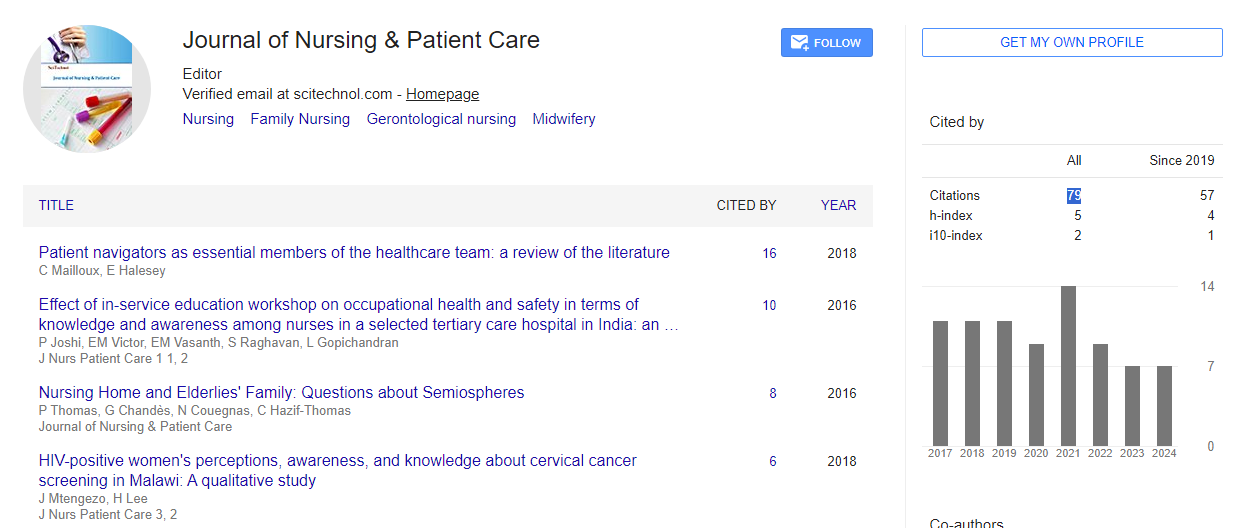Perspectives on the care of children with the Trisomy 18 and 13 Syndromes
John C Carey
University of Utah and Primary Children’s Hospital, USA
: J Nurs Patient Care
Abstract
The trisomy 18 and 13 syndromes represent the second and third most common autosomal chromosome disorders in humans after Down syndrome. The conditions are particularly unique among birth defect syndromes because of the combination of the high neonatal and infant mortality, the increased frequency of major structural defects especially of the heart, and the consistent occurrence of significant psychomotor and cognitive disability among older children. The conventional approach to care and management of children with these trisomy syndromes is pure comfort care and the avoidance -and sometimes “denial”-of technological intervention. Population studies of mortality from the 1980s through the last decade showed that about 50% of infants died in the first week of life, and only 5 -6% of children were alive at their first birthday. Two studies in North America published in 2016 documented an increase in survival to 12- 14% by 12 months of life. The authors of the investigations suggested that increased intervention and procedures during care in recent years could account for this change in survival in the children with the syndromes. Additionally some authors have suggested that there has been a” shift in the paradigm of care” with the model of shared decision being frequently implemented in management. The author recommends involving parents in decision making from the onset, counseling parents in non-biased ways free of their own view towards the quality of life, and using current outcome data in counseling. Avoidance of terms such as “lethal” and “incompatible with life” is important and appreciated. Future studies could investigate the hypothesis that increased intervention accounts for the recent improved survival figures and analyze the quality of life of parents of children and their perception of the child’s quality of life. Parents appreciate a goal-directed approach that includes a treatment plan informed by the child’s individual physiological problems rather than by the diagnosis of the trisomy syndrome.
Biography
John C. Carey, MD, MPH, FACMGG, FAAP, is Emeritus professor and formerly vice chair of academic affairs, department of pediatrics, at the University Of Utah School Of Medicine. Throughout his career, he has been interested in birth defect syndromes and the care of children with these conditions. After undergraduate years and medical school he trained in pediatrics and genetics & dysmorphology at the University of California San Francisco. He joined the faculty at University of Utah Health in 1979 and became chief of the division of medical genetics in 1985; in 2001 he became Editor-in-Chief of the American Journal of Medical Genetics and held that position until 2016 and is now Editor in chief Emeritus of the Journal. He has authored over 300 papers, chapters, and editorials and co-authored the widely-used textbook, “Medical Genetics,” by Jorde, Carey, & Bamshad, now 6th edition. He has served as medical adviser and “founding professional” for the Support Organization for Trisomy 18, 13 and Related Disorders (SOFT) since 1980. The medical and ethical aspects of care of persons with these conditions are currently his major academic interest.
 Spanish
Spanish  Chinese
Chinese  Russian
Russian  German
German  French
French  Japanese
Japanese  Portuguese
Portuguese  Hindi
Hindi 